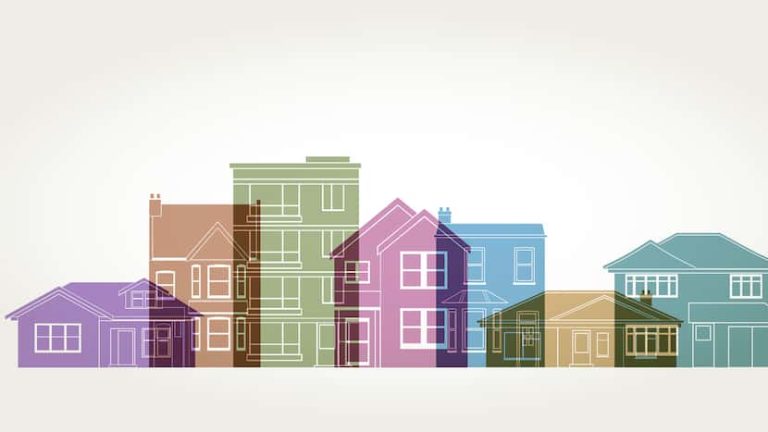The marketing class at Baylor University’s Hankamer College of Business began like a Sunday school lesson with a passage from the Book of Habakkuk on how to create a vision. The professor explained that how you communicate your vision is just as important as crafting the vision itself. Herein lies the current problem with Forward Dallas, the citywide visioning plan that establishes guidelines for how land should be used and what the city should look like: The vision is well-crafted, but it’s not clear how to do it, and Dallas residents are having a hard time buying into it.
Worse than not understanding the vision, some residents are interpreting it in their own way. This is understandable, because a poorly drawn vision is divisive. Suddenly, the conversation about our city’s future has been hijacked by a debate about population density. Add to that a completely unrelated memo from City Councilman Chad West asking the City Council to consider reducing the minimum lot size for single-family homes, and a long-standing distrust of City Hall, and you’ve created some unfortunate confusion.
Even as someone with a strong understanding of urban planning, I must admit that it took me a good deal of time and a few conversations to fully understand Forward Dallas. The plan reads as if it was written by an urban planner. The data briefings highlight financial analysis of how the city can get more tax value from mixed-use zoning than single-family homes, and use the National Institute for Fighting Child Poverty’s Rental Housing Needs Assessment to explain the housing shortage for households making under 50% of the area median income. It all reads like talking points to prove the need for density.
The plan is divided into five themes that underpin its goals, objectives, and action steps. These themes are Environmental Justice and Sustainability, Transit-Oriented Development and Connectivity, Housing Choice and Access, Economic Development and Revitalization, and Community and Urban Design. With the exception of the theme of Housing Choice and Access, the plan is solid and well-constructed.
Under these themes, the plan introduces place types, which are categories of proposed land uses. Examples of these categories include community housing, neighborhood mixed use, industrial, urban, and regional open space. Finally, the plan describes the primary and secondary uses for the land for each specific place type. The primary and secondary uses are recommendations, not density passes by right.
At the heart of opposition to Forward Dallas is the way in which the vision increased density in existing single-family neighborhoods by recommending mixed land descriptions (including linked apartment buildings of up to 10 units) as the primary use for community residential land types. Now, this vision has been replaced by a debate about density.
Density is a solution that will boost the supply of housing units and increase taxable land values, but density does not necessarily make housing affordable and may out-price existing residents. Just ask any old West Dallas resident. The first products to be densified in West Dallas in recent years were townhouses starting at $500,000. Density is not a silver bullet to solve the housing crisis, so let’s stop acting like it is. We certainly need density, but increased density must be smart, strategic and controlled, and must not erode the fabric of existing single-family neighborhoods.
Let’s not overreact to the housing crisis and rush into policies that could create even bigger problems. A lack of intent is what got us into this situation. Being intentional and smart is the way out.
Here are the solutions to get Forward Dallas back on track.
Rethink your messaging
Give our recently hired Director of Planning, Emily Liu, and our very capable Deputy Mayor, Robin Bentley, the opportunity to reset and adjust the message and reintroduce the changes our residents need before we move to Council.
Systematizing the process of community-led planning
This brings fairness to the planning process. Builders of Hope’s West Dallas Vision Plan is one example of how this can be accomplished. But it must be done with the understanding that neighborhoods cannot completely exclude certain types of housing because it could violate fair housing laws.
Reducing the allowable density in existing single-family residential neighborhoods
Homeowners have the right to maintain the character of their neighborhoods, but they do not have the right to completely restrict denser housing types: multi-family homes and densities greater than four units are not the primary use of community housing.
Exploring the concept of density bonus policies for single-family homes
Cities like Austin have put this policy in place to tie density to housing prices and ensure the market doesn’t monopolise increased density by simply building more expensive housing on smaller lots. It also limits what can be built by controlling height, roof types, and porch/garage layouts.
Some of you may want Forward Dallas to go away. It shouldn’t be. But we need improvement. By following these steps, you can help more people buy into the necessary planning.
James Armstrong is CEO of Builders of Hope.
We welcome your comments via letters to the editor. Please see our guidelines. Send your letter hereIf you have any problems with the form, please email us. Email:

